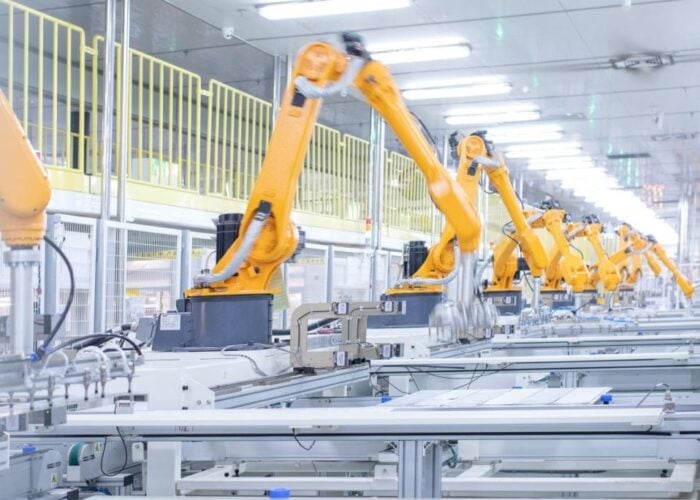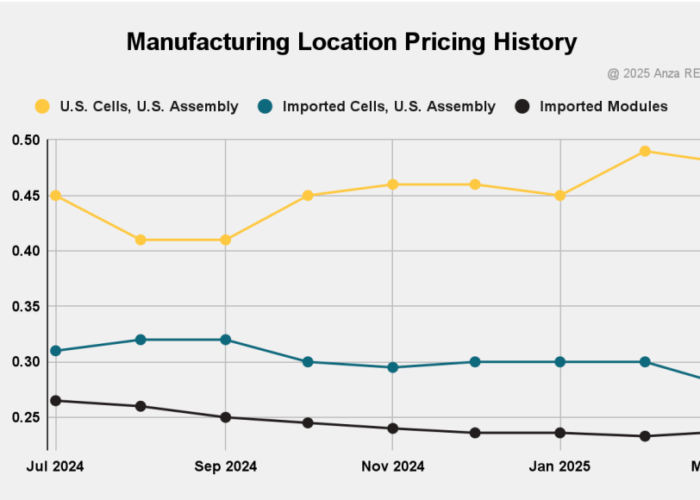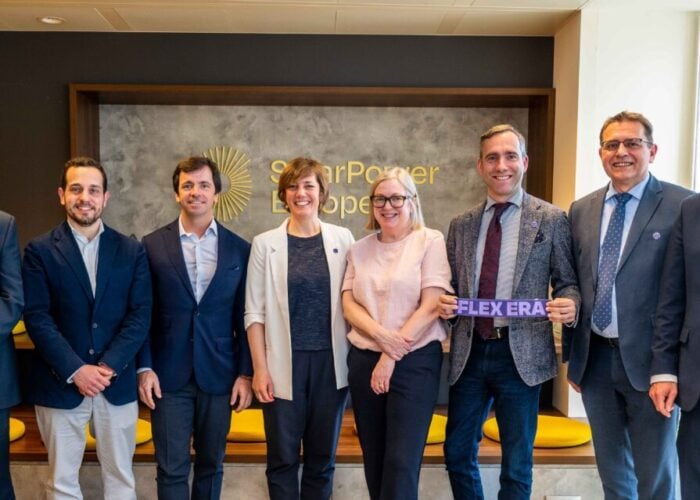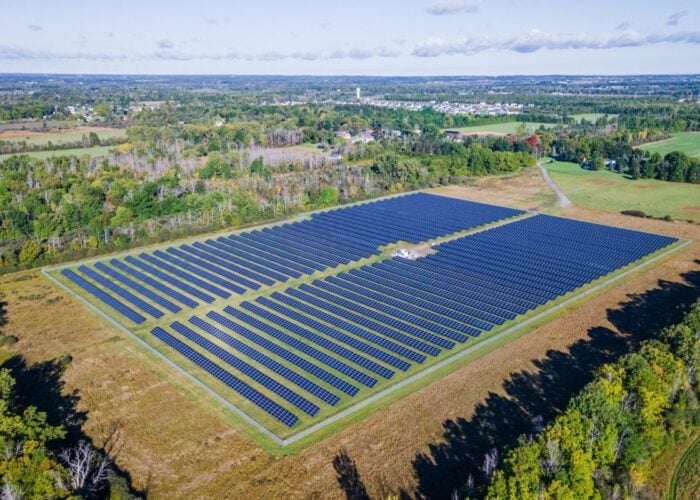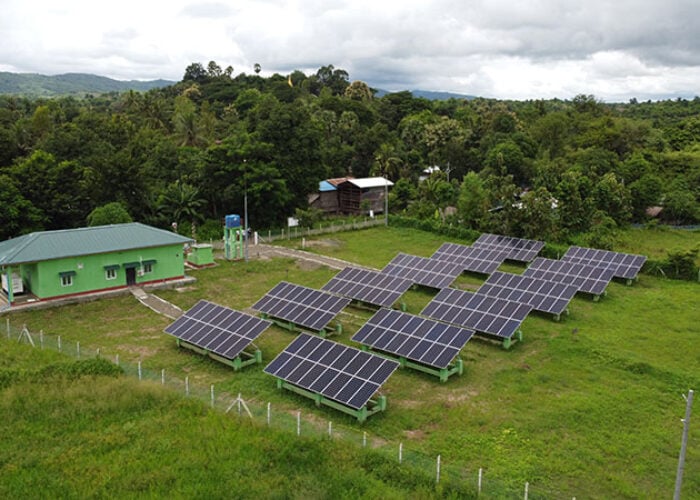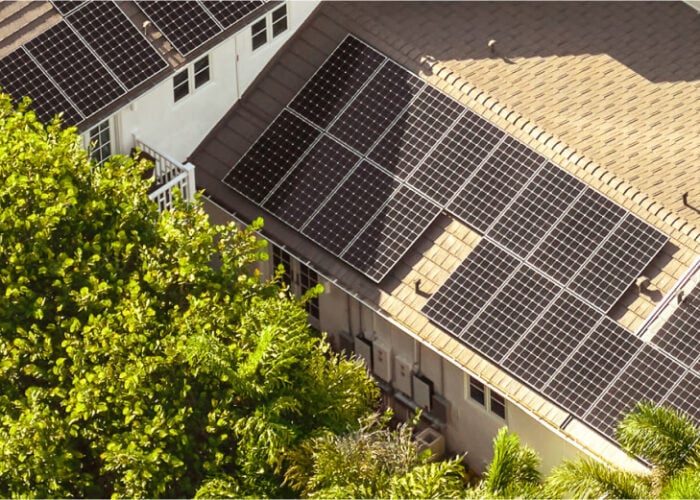Sharp Corporation is planning to make a big leap in a-Si thin film cell conversion efficiencies when it starts production at its nearly completed 1GW plant in Sakai City, Osaka Prefecture, Japan. At a press event held in Berlin, late last week, Sharp noted that its current thin film modules have conversion efficiencies of 8.5% but production of a new tandem junction with 10% conversion rates will enter volume production at the new plant, possibly by the end of 2009. This would mean Sharp has the highest a-Si cell efficiencies and would significantly close the gap on thin film leader First Solar, which is expected to reach 11% conversion efficiencies with its CdTe cells by the end of 2009. The majority of other a-Si thin film producers have production cell efficiencies in the 6-7% range, according to Sharp.
The new mega-plant will be equipped specifically for the tandem junction technology with plans for a triple junction cell technology with 12% conversion efficiencies expected to enter volume production in 2011 onwards.
Unlock unlimited access for 12 whole months of distinctive global analysis
Photovoltaics International is now included.
- Regular insight and analysis of the industry’s biggest developments
- In-depth interviews with the industry’s leading figures
- Unlimited digital access to the PV Tech Power journal catalogue
- Unlimited digital access to the Photovoltaics International journal catalogue
- Access to more than 1,000 technical papers
- Discounts on Solar Media’s portfolio of events, in-person and virtual
Or continue reading this article for free
The new manufacturing plant in Sakai will be fully integrated with glass production and has been designed with two production floors and fully automated in an effort to ensure the lowest possible manufacturing costs at full production, which depending on market demand should take as little as 2-years to reach capacity.
Unlike many thin film producers, Sharp uses proprietary low temperature processes and tools, having developed its thin film technology in 1975.
Caption: Far right front row of production plants is the new thin film fab. Glass production is in the large plant directly behind the thin film plant.

